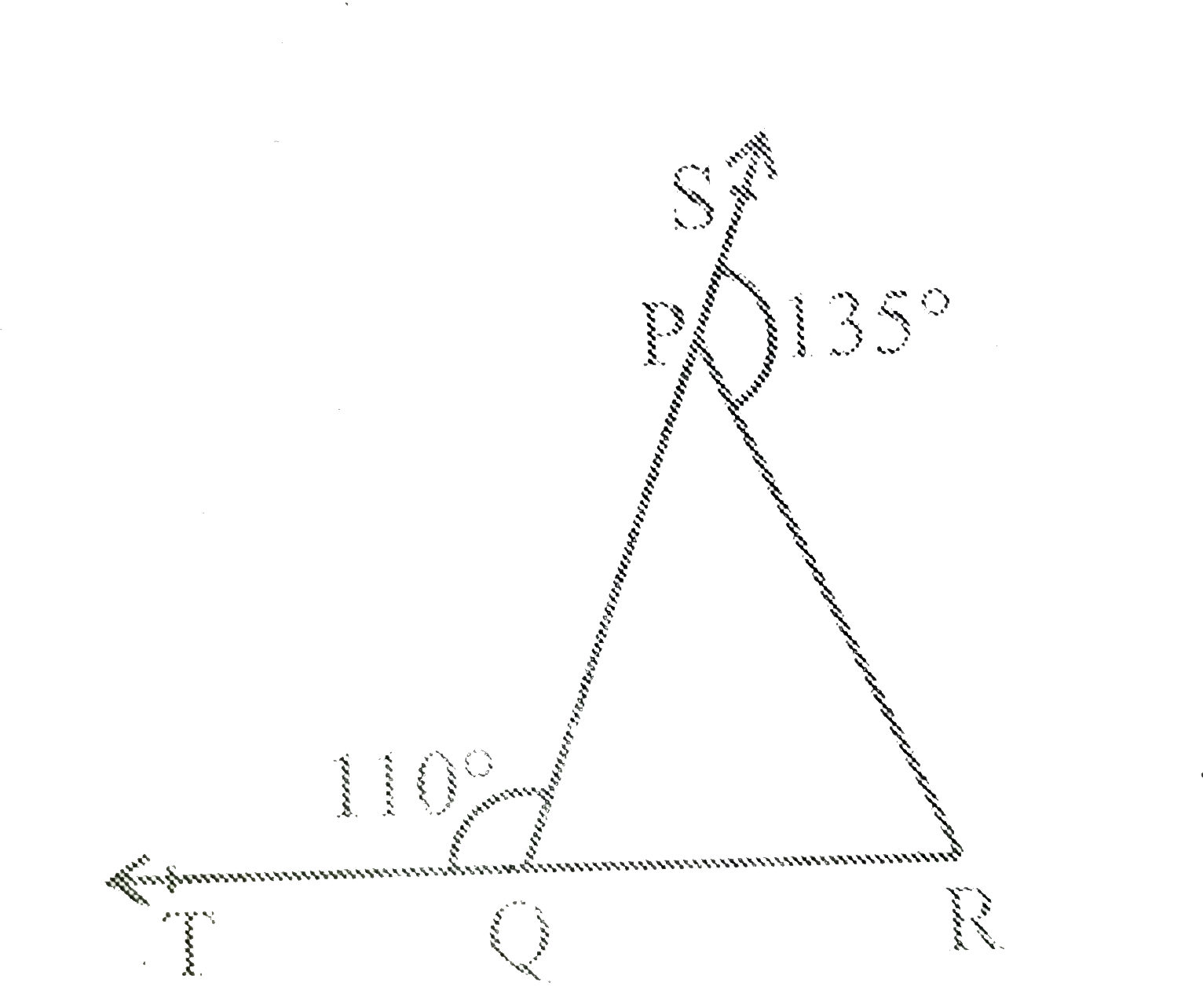In figure, sides and of are produced to point and respectively. If and find Figure
To solve the problem, we need to find the angle ∠PRQ given the angles ∠SPR=135∘ and ∠PQT=110∘.
1. Identify the Angles:
We have two angles given:
- ∠SPR=135∘
- ∠PQT=110∘
2. Use the Exterior Angle Theorem:
According to the Exterior Angle Theorem, the exterior angle is equal to the sum of the two opposite interior angles. In this case:
∠SPR=∠PQR+∠PRQ
Therefore, we can express this as:
135∘=∠PQR+∠PRQ(1)
3. Express ∠PQR:
Similarly, we can express ∠PQT using the same theorem:
∠PQT=∠PQR+∠QRP
Thus:
110∘=∠PQR+∠QRP(2)
4. Relate ∠QRP and ∠PRQ:
Since ∠QRP and ∠PRQ are angles in triangle PQR, we can express ∠QRP in terms of ∠PRQ:
∠QRP=180∘−∠PQR−∠PRQ(3)
5. Substituting and Solving:
Substitute ∠QRP from equation (3) into equation (2):
110∘=∠PQR+(180∘−∠PQR−∠PRQ)
Simplifying this gives:
110∘=180∘−∠PRQ
Rearranging, we find:
∠PRQ=180∘−110∘=70∘
6. Final Calculation:
Therefore, the angle ∠PRQ is:
∠PRQ=70∘
Conclusion:
The required angle ∠PRQ is 70∘.
We have two angles given:
- ∠SPR=135∘
- ∠PQT=110∘
According to the Exterior Angle Theorem, the exterior angle is equal to the sum of the two opposite interior angles. In this case:
∠SPR=∠PQR+∠PRQ
Therefore, we can express this as:
135∘=∠PQR+∠PRQ(1)
Similarly, we can express ∠PQT using the same theorem:
∠PQT=∠PQR+∠QRP
Thus:
110∘=∠PQR+∠QRP(2)
Since ∠QRP and ∠PRQ are angles in triangle PQR, we can express ∠QRP in terms of ∠PRQ:
∠QRP=180∘−∠PQR−∠PRQ(3)
Substitute ∠QRP from equation (3) into equation (2):
110∘=∠PQR+(180∘−∠PQR−∠PRQ)
Simplifying this gives:
110∘=180∘−∠PRQ
Rearranging, we find:
∠PRQ=180∘−110∘=70∘
Therefore, the angle ∠PRQ is:
∠PRQ=70∘
The required angle ∠PRQ is 70∘.
Topper's Solved these Questions
Similar Questions
In Figure, side QP and RQ of PQR are produced to point S and T respectively. If ∠SPR=1350and ∠PQT=110∘, find ∠PRQ
View SolutionIn Fig. 6.39, sides QP and RQ of ΔPQR are produced to point S and T respectively. If ∠SPR=135∘ and ∠PQT=110∘, find ∠PRQ.

View SolutionIn Figure, TQ and TR are the bisectors of ∠Q and ∠R respectively. If ∠QPR=800and ∠PRT=300, determine ∠TQR and ∠QTR
View SolutionIn figure, PQ=PR . Show that PS>PQ.
View SolutionIn Figure , find out ∠PXR, if PQ ∣∣ RS.

View SolutionIn Figure, PQ>PR.QS and RS are the bisectors of ∠Q and ∠R respectively. Prove that SQ>SR.
View SolutionIf Figure, if QT⊥PR,∠TQR=400 AND ∠SPR=300, find x and y. Figure
View SolutionIn figure, if lines PQ and RS intersect at a point T such that PRT=400,∠RPT=950 and ∠TSQ=750, find ∠SQT. Figure
View SolutionIn Fig. , the side QR of △ PQR is produced to a point S. If the bisectors of ∠PQR and ∠PRS meet at point T, then prove that ∠QTR=12∠QPR.

View SolutionIn Fig. 6.31, if PQ∣∣ST,∠PQR=110∘ and∠RST=130∘, find ∠QRS.

View Solution